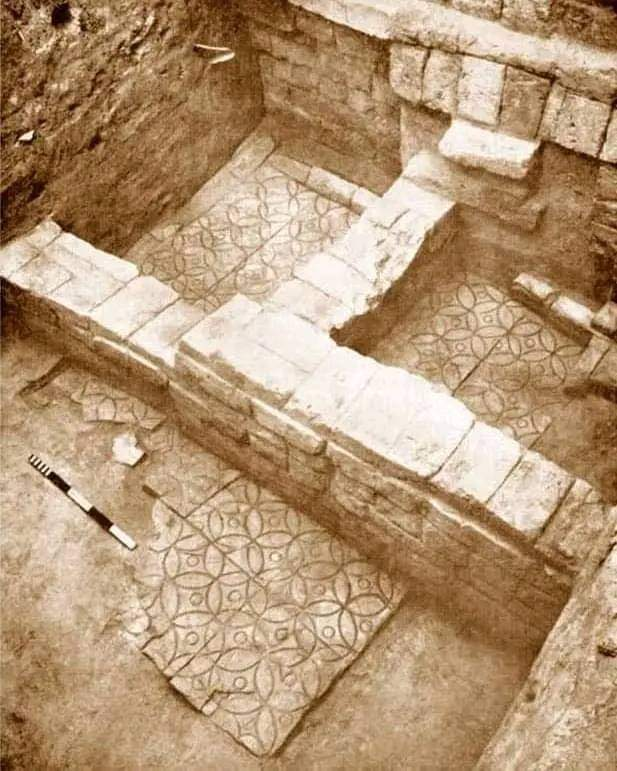Kalibangan 2600 BCE
In 1969, archaeologist BK Thapar excavated Kalibangan (Rajasthan, India). They dug out a settlement which dates back to mature IVC phase (c. 2600 BC) along the banks of now extinct Sarasvati river.
But the archaeologist was shocked. He saw that the houses had tiled floors. And the tiled floors were painted with a design. 'This is exactly the design on the floor of my house'- the startled archaeologist exclaimed.
Such is the continuity of past and present in India!
The Kalibangan excavation, led by archaeologist B.K. Thapar, took place in two phases:
First phase (1960-1969): This phase focused on the excavation of the citadel area, where the mature Harappan settlement was discovered.
Second phase (1984-1990): This phase concentrated on the excavation of the lower city, which revealed the early Harappan settlement.
The excavation revealed a fascinating insight into the Indus Valley Civilization, including the discovery of the tiled floors with designs.
The discovery at Kalibangan is a great example of the advanced civilization of the Indus Valley Culture (IVC). The tiled floors, dating back to around 2600 BC, showcase the sophisticated urban planning and architecture of the time. The fact that the design on the ancient tiles is similar to those found in modern Indian homes highlights the remarkable continuity of cultural traditions and designs over thousands of years! It's a fascinating glimpse into India's rich history and heritage.
🙏🙏


0 Comments:
Post a Comment
Subscribe to Post Comments [Atom]
<< Home